Cuban Guide
The Cuban archipelago is formed by the Cuban island, the Island of
Youth (Isla de la Juventud) (formerly the Island of Pines) and about 4 195 quays
and little islands. The Cuban island is long and narrow, and it looks like a
big alligator as you can see in the map that is shown on this page. It is located
in the Caribbean Sea (Mar Caribe). Its borders on the Gulf of Mexico (Golfo
de México) in the northwest; in the north on the Florida Straits and
the Old Bahamian Channel which isolates it from the United States and Bahamas
respectively; in the east on Wind Passage (Paso de los Vientos) which isolates
it from Jamaica; and in the west on the Yucatan Strait (Estrecho de Yucatan)
which isolates it from Mexico.
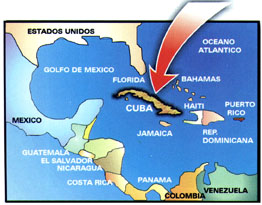
Language:
The official language of the Republic of Cuba is Spanish. Nevertheless, as a consequence of the high cultural level of Cuban people more of its inhabitants speak English and Italian.
Administrative division: 14 provinces and a special municipality
Climate:
Cuba is a tropical country, with an average of 330 sunny days per year.
The medium year temperature is 25,5 °C.
The cool month: January with 21 °C
The warm months: July and August with 32 °C.
La radiación anual del sol : 80 kilocal
Average temperature of coastal waters: 25 °C in winter, 28 °C in summer
Average relative humidity: 78 % Average annual rain: 1 515 mm.
Months with least rainfall: December and August.
Flora y Fauna: The Cuban flora has more than 8 000 species of plants, among them we can find ornamental, medicinal, foodstuff and productive plants, that serve as an important tourist attraction. The Cuban subtropical fauna is characterized by the non-existence of ferocious and dangerous animals, like snakes and poisonus insects as in other countries. It has a great biodiversity with about 900 kinds of fish, 4 000 kinds of mollusk, 300 species of birds and 1 000 types of insects. Among the more outstanding animals mention must be made of : the "tomeguin del pinar", a type of bird; the "manjuari", a mammal native of Cuba which lives in the rivers; the "almiqui" which is a real live fossil; and the crocodile (cocodrilo). Besides, it is possible to find some rare animals like the "zunzuncito", also known as the bird humming which is the smallest bird in the world (5 cm); the bat butterfly (mariposa bruja); the iguana; the "polimitas" snail (native of Cuba) and the little frog "cubensis", also the smallest in the world. The most beautiful birds are the "tocororo", the flamingo (flamenco) and the parrot (cotorra)..
National Attribute
The National Flag
The Cuban flag was hoist for the first time in 1850 in the city of Cardenas by an
insurgent cuban group against the spanish crown. Its equilateral red triangle
represents the unity of all cubans, achieved by the spilling of the blood of
the Cuban people in there fights for freedom. The five point solitary star located
in the center of the red triangle represents the independent and sovereign character
of Cuba. The three blue stripes represent the three departments into which
the island was divided: Western, Central and Eastern. The blue color also represents
our blue sky. The white stripes represent the pureness and virtues of the Cuban
people .
At the outset
of the War of Independence, on the 10th of October 1868, Carlos Manuel de Céspedes
ordered the designing of another flag, which is the figure located next to the
National Emblem in the conference hall of the Cuban Parlament.
 Cuban flag was hoist for the first time in 1850 in the city of Cardenas by an
insurgent cuban group against the spanish crown. Its equilateral red triangle
represents the unity of all cubans, achieved by the spilling of the blood of
the Cuban people in there fights for freedom. The five point solitary star located
in the center of the red triangle represents the independent and sovereign character
of Cuba. The three blue stripes represent the three departments into which
the island was divided: Western, Central and Eastern. The blue color also represents
our blue sky. The white stripes represent the pureness and virtues of the Cuban
people
Cuban flag was hoist for the first time in 1850 in the city of Cardenas by an
insurgent cuban group against the spanish crown. Its equilateral red triangle
represents the unity of all cubans, achieved by the spilling of the blood of
the Cuban people in there fights for freedom. The five point solitary star located
in the center of the red triangle represents the independent and sovereign character
of Cuba. The three blue stripes represent the three departments into which
the island was divided: Western, Central and Eastern. The blue color also represents
our blue sky. The white stripes represent the pureness and virtues of the Cuban
people
At the outset
of the War of Independence, on the 10th of October 1868, Carlos Manuel de Céspedes
ordered the designing of another flag, which is the figure located next to the
National Emblem in the conference hall of the Cuban Parlament.
Scutcheon
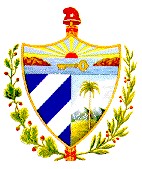
The coat of arms
is a symbol of the nation, which describes in its integrity the cuban
country any where in the world. The geographic and political
importance of Cuba is represented by a key which is placed transversely between
the islands of Cape Sable in Florida and Cape Catoche in Yucatan at the
entry of the Gulf of Mexico, The raising sun represents the young upcoming
republic. The inferior left quarter has the same meaning of the flag stripes.
The inferior right quarter shows a typical cuban countryside, with the
royal palm as a symbol of the strong character of the cuban people, because
this tree stands even after the passage of the most furious storms. As
a support of the scutcheon, there is a bundle of eleven twigs which represent
the unity of the cuban people in their freedom fights, The scutcheon is crowned
by a frigid cap, which has in its center the lone star as a sample of the independent
and sovereign character of the Cuban island. Its red color represents the spilt
blood of the Cuban people in order to obtain their freedom. The scutcheon is
bordered on its right side, by an evergreen oak branch, representing strength,
and on its left side, by a laurel branch, representing victory.
The National Bird
El
tocororo (Priotelus Temnuru s),
is a climbing bird, endemic to Cuba, with beautiful showy colors. Its plumage
reproduces the colors of the Cuban national flag : blue, red and white. With
a native name: "Guatini", the tocororo lives in forests throughout
the whole country, especially in the mountainous areas. It was chosen as the
Cuban national bird because of two main reasons, the symbolism of its beautiful
and spritely plumage and for its resistance to captivity, which represent the
Cuban people´s strive for independence.
s),
is a climbing bird, endemic to Cuba, with beautiful showy colors. Its plumage
reproduces the colors of the Cuban national flag : blue, red and white. With
a native name: "Guatini", the tocororo lives in forests throughout
the whole country, especially in the mountainous areas. It was chosen as the
Cuban national bird because of two main reasons, the symbolism of its beautiful
and spritely plumage and for its resistance to captivity, which represent the
Cuban people´s strive for independence.
The National Tree
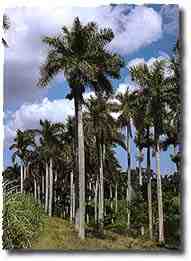 The Royal Palm (Palma Real)
The Royal Palm (Palma Real)
(Roystonea Regia. O.F. Cook) is known by all of the Cuban people as the queen
of our countryside, because of the majesty of its structure, its peculiar height,
its strength and because it is the most numerous of the Cuban trees. There is
not a Cuban landscape without the Royal Palm, in spite of it not being a native
cuban tree. It reaches a height between forty and fifty feet, and is topped
by a very beautiful tuft of pinnatisec of leaves, Because of its elegance,
the palm has inspired a lot of poets, musicians and painters. It is a central
part of the cuban landscape stamped on the Cuban national scutcheon.
The National Flower
 The Butterfly (La Mariposa) (Hedychium Coronarium
Koenig), takes its name from the beautiful lepidopteron insects due to its petals
resembling them. It is the Cuban national flower. It is a white flower, beautiful
and odorous, indigenous to Cuba. It grows in moist places like the shore
of rivers and lakes, but it can also be cultivated in the courtyard or gardens
of the Cuban houses. Its white color, also present in two stripes of the national
ensign, is associated with peace and the pureness of the ideals of independence.
The butterfly is also a symbol of the delicacy, gracefulness and slenderness
of Cuban women, and it was used as a symbol of insurrection during the
freedom fights
The Butterfly (La Mariposa) (Hedychium Coronarium
Koenig), takes its name from the beautiful lepidopteron insects due to its petals
resembling them. It is the Cuban national flower. It is a white flower, beautiful
and odorous, indigenous to Cuba. It grows in moist places like the shore
of rivers and lakes, but it can also be cultivated in the courtyard or gardens
of the Cuban houses. Its white color, also present in two stripes of the national
ensign, is associated with peace and the pureness of the ideals of independence.
The butterfly is also a symbol of the delicacy, gracefulness and slenderness
of Cuban women, and it was used as a symbol of insurrection during the
freedom fights
The National Anthem
The words and music of the national anthem were composed by the remarkable cuban patriot Pedro Figueredo Cisneros (Perucho), who in 1867 composed the music, and in October 20 of 1868 wrote the words, when the soldiers of the Liberation Army seized the City of Bayamo. This date is now recognized as one of the most important acts in Cuban history, and because of that, this day was selected as the Cuban Cultural Day. The Anthem was known at the begining as the Bayamesa. Of deep patriotic content, this anthem, forged in the struggle, has been an inseparable companion of all Cubans in our fight for freedom and national sovereignity.
Text:
People of Bayamo rush to the battle:
our homeland watches you proudly
don't be afraid of a glorious death
because to die for the homeland is to live
chains is to live
with dishonour and ignominy
listen to the sound of the clarion
Rush to combat braves!
Cuban People
The Cuban people is the synthesis of several races and cultures,
formed basically for the Spanish people who colonized the country and the Africans
who were brought as slaves. These two races constiitute the Cuban nationality,
which has American and Caribbean characteristics. The Cuban people have
a very special charm which is impossible to resist. They are happy, loquacious,and possess a great sense of humor, essentially friendly, characterized
by solidarity and helpful to all the persons, but especially to persons who
visit their country.
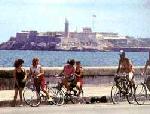
Music and dance are an inseparable part of the Cuban life. Friends
to joking, they laugh in an explosive and hearty manner. Passionate about their
ideas and convictions, they like to debate. They are one of the most hospitable
people in the world. The Cubans like to talk with their visitors, because
of that the doors of their house are always open to receive them. The Cuban
people have made the word "Welcome" (Bienvenido) something more than a
simple way of greeting to those visiting for the first time, for them it is
an extravagant show of gratitude. This word has been inscribed in the vocabulary
of each Cuban person with thousands of different daily  meanings, which state explicitly, at each moment, with a spontaneous
hospitality and friendliness, their true feelings, which creates a very warm
climate on the Island.
This rich mixture of Indian, Spanish and African,
which for years has populated Cuba, has created a Cuban identity with American
and Caribbean characteristics, which are uniquely Cuban.
meanings, which state explicitly, at each moment, with a spontaneous
hospitality and friendliness, their true feelings, which creates a very warm
climate on the Island.
This rich mixture of Indian, Spanish and African,
which for years has populated Cuba, has created a Cuban identity with American
and Caribbean characteristics, which are uniquely Cuban.
¿PRIVATE HOUSES ?
Since September 1997 the Cuban Government iniciated the legalization of renting private houses and apartments, this has gained extraordinary acceptance with tourists who undertake independent travels to our country. This type of accomodation is known as "Casas Particulares" and represents the best option for those travelers who wish to be in close contact with Cuban culture or simply prefer the privacy of a home, than to be restricted to large comercial hotels.
What advantages do the private houses offer?
· Notably cheaper prices compared to those of the hotels, generally in
the range of 25 to 50 dollars per room (depending on the comfort and location
of the house), which can be shared among various guests.
· Direct contact with Cuban culture and Cuban way of life.
· Total privacy.
· The Private Houses permit the guests to entertain Cuban visitors (with 18 years old or more).
· Many Private houses offer breakfast, lunch, dinner and laundry services
for a reasonable price.
· Cuban families are extremely friendly and hospitable and are always
disposed to speak with their guests, offering them useful information about
places of interest, private restaurants, famous discos, excursions and other
cities, etc.,
etc..
CUBAN MONEY
In Cuba we use :
--Peso Convertible (CUC)
--Euro (in Varadero or in turistic sides close to the beach)
--Cuban Peso (CUP)
In some places it s possible to use Credit Card.
Peso Convertible:
"Peso Convertible or C.U.C." is the most used currency in Cuba. It must be changed in CADECA (Exchange House) or in banks. In fact tourists only will use this type of money to pay around 98% of products and services that they will receive in Cuba, the other 2% is explained in the Section "Cuban Peso"
The purpose of "Peso Convertible" is to eliminate the use of american dollar.
All the exchangeable currencies have in Cuba 8 % of exchange fees. For this reason 100 euros are aproximatelly 110-115 pesos convertibles. American dollar has moreover 10 % of penalty. For this reason the dollar has aproximately a discount of 19.5% in reference to CUC (peso convertible); 100 dollars are aproximately 80.5 pesos convertibles.. En
Some occasions travelers confuse Pesos Convertibles and Cuban Pesos and can be cheated. We will show you photos of all the circulating bills and coins. In the case of the bills is very easy to know it because Pesos Convertibles (CUC) has written "Pesos Convertibles".
Front |
Back |
|
| $1 |  |
 |
| $3 |  |
 |
| $5 |  |
 |
| $10 |  |
 |
| $20 |  |
 |
| $50 |  |
 |
| $100 |  |
 |
Convertibles Currency :
5 cents |
10 cents |
25 cents |
50 cents |
1 peso |
 |
 |
 |
 |
 |
One Peso Convertible is equal to 24 Cuban Peso (since June 2005). There are different emissions of bills. We will show you only the newest emission that is the most used in the country. The cuban peso only can by used to pay some services as the buses for public transportation (guaguas), some public phones; to buy some products in the agricultural market as fruits, vegetables, rice, beans, etc., or to buy juice, sweets or pizzas in private cafeterias
Front |
Back |
|
| $1 | 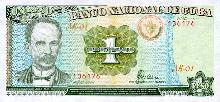 |
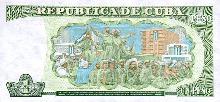 |
| $3 |  |
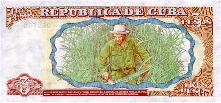 |
| $5 | 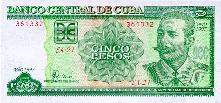 |
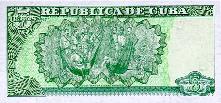 |
| $10 |  |
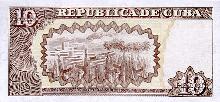 |
| $20 | 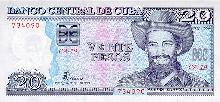 |
 |
| $50 | 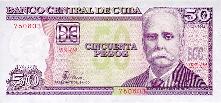 |
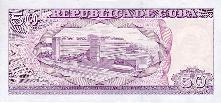 |
| $100 | 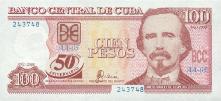 |
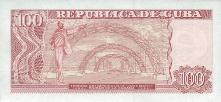 |
Is not possible to use american credit cards. Visa and Mastercard are accepted but not from American banks.
Automatic Cash:
In the automatic cash you will receive pesos convertibles (CUC).
Customs Regulations
- It shall be possible to export an amount of up to 23 (twenty three) unit of rolled cigars, in individual units, without producing any relevant purchase document.
- If you exceed that amount, you will be obliged to claim the official purchace receipt and a copy of it at the shop, and hand a copy in at the Customs Office at the exit point where you´ll be leaving with the cigars, wich must be contained in the original cases with all the official seals, including the new holographic seal. Any failure to abide by the basic requirement of a legal purchase, the product will be seized by Cuban´s customs Office.
ART ITEMS (PAINTINGS, ENGRAVINGS, HANDCRAFT, ITEMS, ETC) NOT BEING PATRIMONIAL OBJECTS..
- Such items can only be exported under express authorization issued by the National Registry of Cultural Goods. The value of the items can exceed the authorized amount of one thousands (1000.00) CUC.
MUSEUM - VALUABLES AND NATIONAL HERITAGE OBJECTS OR ITEMS.
- It shall only be possible to re-export museum-valuable items or objects previously imported and to this purpose it shall be required to produce the Declaration that Customs certified while being introduced into the country.
It shall only be permited to export convertible currency and other valuables exceding and amount of five thousands (5000.00) US Dollars it.
- The amount had been previously imported. To this purpose it shall be necessary to produce the Declaration of Value filled and certified on entering the country.
- The amount was lawfully acquired in the country, whic shall be proven through presentation of the relevant bank document.
It is not authorized to export books and other publications with editions dated more than 50 years back, nor the ones marked as belonging to "Ediciones R" or bearing stamps of libraries or other organizations.
After almost three months of navigating through oceans and seas, on October 27, 1492, Christopher Colombus arrived at the Cuban coast. Eighteen years later, in 1510, Diego Velazquez began the conquest of the Cuban territory. Starting from this date, the first villages were founded : Baracoa (1512), Bayamo (1513), Trinidad (1514), Santi Spiritus (1514), Santiago de Cuba (1515), La Habana (1515) and Camaguey (1515).
Since the Spanish conquerors were seated in Cuba, they subjected the aboriginal people to slavery. So because of that, this population was extinguished in a few decades. In order to supply this manual labor, Spain began to import thousands of blacks from Africa, to work as slaves on the sugar plantations. In this way that mixture of the elements which created the Cuban native people was introduced. With time there emerged a great sense of patriotism and independentism among these Cuban natives, very attached to Cuba, their native land, and were not disposed to occupy a secondary place behind the metropolitan merchants and rulers that obligated them to negotiate only with Spain. A national feeling was rising in this way, that found its maxim an expression in the XIX century with the begining of the War of Independence (Guerra de Independencia).
In the middle of the XVIII Century, an unexpected occurence greatly affected, the economic, political and social environment of Cuba: the occupation of Havana by the English in 1762. For a period of eleven months more than one thousand ships entered the Havana port, establishing a wide trade with the Thirteen northamerican colonies. At the same time the English introduced more than ten thousands slaves to propel the development of the sugar cane industry. Havana was recovered in 1763, exchanged for the peninsula of Florida, discovered and conquered by Spain in the XVI century.
In front of this facts, the process of the formation the Cuban nationality was accelerated and the idea of the liberation became stronger with time. On October 10, 1868, the fight for national independence began. The landowner and bayames lawyer Carlos Manuel de Cespedes, set his own sugar cane factory known as "La Demajagua" on fire, announced the independence of Cuba and gave freedom to his slaves. In this way the First Cuban War of Indepence began (the Ten Years War), and continued for ten years until 1878. In this war many patriots like Carlos Manuel de Cespedes, Antonio Maceo, Maximo Gomez, Ignacio Agramonte, Calixto Garcia and others stood out.
In 1878 a truce of the hostilities was announced, and from this
truce emerged the most important figure in the Cuban War of Independence,.
 José
Martí (1853-1895), who founded the Cuban Revolutionary Party. On February 24, 1895, the war
resumed, and was spearheaded by Jose Marti, who was killed in battle three months
later. On May 19, 1895. Maximo Gomez and Antonio Maceo continued the fight and
extended the war from the east side of the country to all Cuba. Spain could
do nothing to halt the advance of the Cuban troops. The United States, which
saw the imminence of the Cuban victory, and which had desired for many years
the possession of Cuba, declared war against Spain, and used as a pretext, the
dark fact of the explosion of the North American battleship "Maine", anchored
in the Havana Bay, to intervene in the war.
José
Martí (1853-1895), who founded the Cuban Revolutionary Party. On February 24, 1895, the war
resumed, and was spearheaded by Jose Marti, who was killed in battle three months
later. On May 19, 1895. Maximo Gomez and Antonio Maceo continued the fight and
extended the war from the east side of the country to all Cuba. Spain could
do nothing to halt the advance of the Cuban troops. The United States, which
saw the imminence of the Cuban victory, and which had desired for many years
the possession of Cuba, declared war against Spain, and used as a pretext, the
dark fact of the explosion of the North American battleship "Maine", anchored
in the Havana Bay, to intervene in the war.
The war finished with the signing of the peace treaty (the Treaty of Paris, of December 10, 1898) between Spain and the United States, and as consequence of this North America took absolute control of Cuba, Puerto Rico and Philipines. On May 20, 1902, a formal independence controled by a cuban oligarchy dependent on Washington was conceded to Cuba, after three years of United States rule, which converted the country into United States neo-colony. Since that, many corrupt governments and North American interventions took place, which completed the mission to deliver the country´s riches to external interests.
On March 10, 1952, the general Fulgencio Batista, dealt the state a blow and established one of the most repressive dictatorial goverments in Cuban history. On July 26, 1953, a group of young people with Fidel Castro at his head, attacked the Moncada Fortress "Cuartel Moncada", in Santiago of Cuba (at the east side of the country), the second largest Cuban military fortress with the objetive of arming the people and beginning a general insurrection. The attack finished with a military defeat, but it highlighted the figure of Fidel Castro as a leader of the future revolution. Fidel represented himself by using the now popular defense "History will absolve me" "La Historia me absolverá"..Fidel Castro and the other survivors of the attack were given jail sentences at the Model Prison on the Island of Pines (today Island of Youth). A strong an popular campaign secured amnesty for the prisoners, who went into exile to Mexico in 1955. In Mexico, Fidel Castro, organized his companions who took part in the attack of the Moncada Fortress and other revolutionaries that joined them, and among these were the Argentinian Ernesto "Che" Guevara. They left the Mexican port of Tuxpan for Cuba on board the yacht Granma and disembarked on December 2, 1956 by the Coloradas Beach, to the south of the eastern region. They restarted the armed fight, this time as guerillas in the Sierra Maestra Mountains. At the same time a secret war campaign (La Clandestinidad) was organized in all of the country.
In the fight with this corrupt goverment, had important martir Julio Antonio Mella, Rubén Martínez Villena and Antonio Guiteras
In the insurrectional period, other more than Fidel, se destacaron other persons that are died, how was Camilo Cienfuegos, el Ché, Frank País and others than are with live, how are Raúl Castro and Juan Almeida.
On January 1, 1959, the dictator Fulgencio Batista was finally defeated by the revolutionary army troops, commanded by Fidel Castro, so that he left Cuba. It was the triumph of the Cuban Revolution. The revolutionary government started a socialist program to establish a national development in all the country. At the same time it inspired a deep social development program that makes Cuba one of the countries of higher levels of social justice in the Third World. It could be highlighted in this program the great achievements in public health, by which Cuba aspire to be a world leader; in education, free at all levels and obligatory until high school; in sports and in culture, which are accessible to all Cubans and proclaimed by our artists all over the world.
Durante todo el gobierno revolucionario (del 1959 a la fecha) las diferentes administraciones norteamericanas han mantenido un bloqueo en mayor o menor grado hacia nuestra isla, así como el apoyo a grupos contrarevolucionarios cubano-americanos y a la disidencia cubana, fomentando la realización de acciones contra nuestra isla, prueba de ello es el caso de los 5 Héroes Cubanos que se mantuvieron apresados en los Estados Unidos por más de 10 años, por el único delito de luchar contra el terrorismo hacia Cuba.
Major Cities
LA HABANA, PINAR DEL RIO, MATANZAS, VILLA CLARA, CIENFUEGOS, SANCTI SPIRITUS, CAMAGUEY and SANTIAGO DE CUBA

FESTIVAL DAYS
National Holidays (Feriados)
- 1st. of
January: Liberation Day (Dia de la Liberación).
- 1st. of May: Labor Day (Día del Trabajo)
- 26th. of July: Day of National Rebellion (Día de la Rebeldía Nacional)
together with the 25 and 27 of July. Aniversary of Asalto al Cuartel Moncada in Santiago de Cuba, en 1953.
- 10th. of October: Anniversary of the Inauguration of the Wars of Independence
(Guerras de Independencia) in 1868.
- 225th. of December: Christmas Day (Navidad).
National Commemorations (not holidays) (no son días Feriados)
- 28th. of January: José Martí´s Birthday, National Heroe of the Republic of Cuba, in 1853.
-
24th. of February:
Anniversary of the Recommencement of the War of
Independence, in 1895.
- 8th. of March: International Women´s Day (Día Internacional de
la Mujer).
- 13th. of March: Anniversary of the Attack of the Presidential Palace
of La Habana, by a group of young de revolucionaries who intended to serve
justice to the tyrant Fulgencio Batista, in 1957.
- 19th. of April: Anniversary of the Defeat of the Invasory Mercenaries
in the Bay of Pigs (Bahía de Cochinos), in 1961.
- 30th. of July: Day of the Martyrs of the Revolution.
Aniversary of died of Frank País, en 1957.
- 28 de september : Aniversary of Fundation of Comites de Defensa de la Revolución (CDR)..
- 8th. of October: Anniversary of the Death of Comandante Ernesto Che Guevara, en 1967.
- 20th. of October: Day of cuban Culture.
- 28th. of October: Anniversary of the Death of Comandante Camilo Cienfuegos,
en 1959.
- 27th. of November: Commemoration of the Shooting of the 8 Medicine
Students, by the colonial Spanish Goverment, in 1871.
- 7th. of December: Anniversary of the Death in Combat of General Antonio Maceo in 1896, an important figur in the Wars of Independence against Spanish colonial power.
CUBAN CUISINE
In its origen Cuban Cuisine
is also the result of a confluence of factors: Spanish and African. Although
in previous epochs it included elements of the Asian Cuisine with the Chinese
inmigration at the end of the 19th century.
The Spanish introduced rice,
limes, oranges, cattle and horses, with which this supplemented their daily
diet.
The African slave contributed
to the daily diet by bringing foods typical to his native land, such as yam
(ñame), and the original Cuban crops such as cassava (yuca), okra (quimbombó),
corn (maíz) were contributed by the indigenous inhabitants.
Subsequently all these elements
combined to give birth to what we now call the Cuban creole cuisine. As early
as the 19th century the typical creole cuisine began to differenciate itself
 from the Spanish, even acquiring its own characteristics like certain combinations
exemplified in rice and chicken, rice and beans (also called "moros con
cristianos" or "arroz moro"), oriental congrí (rice with
red beans), which constitutes one of the most typical dishes of the Cuban Cuisine.
from the Spanish, even acquiring its own characteristics like certain combinations
exemplified in rice and chicken, rice and beans (also called "moros con
cristianos" or "arroz moro"), oriental congrí (rice with
red beans), which constitutes one of the most typical dishes of the Cuban Cuisine.
The national dish is called "ajiaco criollo", a combination of ground
provisions and diverse types of meats cooked together which vary because of
seasoning and the diversity of the ingredients which are employed in its confection.
 The most common are - cassava, arum, sweet potatoes, Irish potatoes, green and ripe bananas, corn and pieces of dried and salted meats.
The most common are - cassava, arum, sweet potatoes, Irish potatoes, green and ripe bananas, corn and pieces of dried and salted meats.
The most typical cuban dishes are, in addition to "ajiaco" and the
combinations of rice with different ingredients, fried or stewed pork, "tostones"
(also called "chatinos"): slices of green bananas crushed and fried,
"chicharrones de cerdo" ( fried pork skin) and ground beef ( popularly
known as "picadillo a la habanera"in Cuba).
In Cuba there is an ample network of restaurants, many of which specialize in
Cuban Cuisine, but also in international ones: French, Italian, Chinese, Arabian,
Spanish among others.
CUBAN COCKTAILS
Cuba is the sugar island.
And from the sugar the alcohol is extracted and from this spirits are produced.
The spiritous liquor, subjected to an aging process and subsequently distillation,
gives origen to a rum of exquisit quality, chemically pure - Cuban rum; so famous
in the world as its tobacco.
In the 19th century the rum industry achieved its greatest development. Distilleries
were constructed in Cárdenas, Santiago de Cuba, Cienfuegos and La Habana. Subsequently
varios brands came into being: "Campeón", "Obispo", "San Carlos", "Jiquí, "Bocoy",
"Albuerne", "Bacardí "Castillo" and "Havana Club". The last one was founded
in Cárdenas (Matanzas) in 1878.
The brand "Havana Club" is the most popular Cuban rum in the world, but other
brands have also managed to penetrate the difficult and sometimes exclusive
market of drinks; among these it is worth mentioning "Caney", "Legendario",
"Matusalén", "Varadero", "Bucanero", "Caribbean Club" and "Edmundo Dantés" with
25 years of preservation.
Cuban rum can be consumed alone (strike) or with ice (on the rocks). In this
case the most ideal rums are the golden ones (with five years of preservation)
or the aged ones (seven years).
White rum or "carta blanca" (with three yares of preservation) are
prefered for cocktails together with "carta plata"
Cuba has an ample variety of cocktails, many of which have gone around the world
and are served in any bar of the orb.
Among the many famous cuban cocktails are::
![]() Cuba Libre: maybe the most internationally famous: white rum, cola, a bit of lime juice,
ice and a slice of lime.
Cuba Libre: maybe the most internationally famous: white rum, cola, a bit of lime juice,
ice and a slice of lime.
![]() Mojito: a refreshing
blend of rum, lime juice,sugar, soda, ice and mint (yerba buena).
Mojito: a refreshing
blend of rum, lime juice,sugar, soda, ice and mint (yerba buena).
![]() Daiquirí: ron, azúcar, jugo de limón y hielo batido.
Daiquirí: ron, azúcar, jugo de limón y hielo batido.
Mulata: similar to daiquirí, but with aged rum and cocoa cream.
Havana Special: white rum, "marrasquino", lime and pineapple juices, ice.
Piña Colada: another of the most internationally famous, coconut cream, pineapple juice, white rum on ice, all blended.
Cubanito: lime juice, salt, english sauce, hot sauce, ice and white rum.
Isla de Pinos: sugar, grapefruit, red vermouth, ice and white rum.
Manhattan: angostura, red vermouth, ice and gold rum.
High Ball: white rum, ice and soda or ginger.
Presidente: red curacao, vermouth Amat or Chamberry, white rum, one sour cherry and orange peel.
Saoco: white rum, coconut water and ice.
Cuba Bella: mint cream, "granadina", lime suice, ice, white rum and y aged rum.